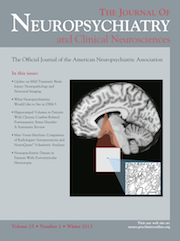Brain Activity Preceded Awareness in Libet’s Experiment Is Probably Related to Unconscious Inhibition
To the Editor: Free will is a hotly attractive field. Not only do we freely perform actions, but also our conscious decisions initiate our actions. The most dominated method to study the neural basis of free will is Libet’s experiment,1 in which participants are asked to press a key whenever they want and also to report time of first experience of urge to move. Motor area activity began some 100 milliseconds before conscious intention to move. These findings raise questions about being free or not. Libet’s experiment was repeated using fMRI2 and direct recording by electrodes.3
Preceded brain activity observed in EEG is related to the primary motor area and premotor area. The premotor area has different functions in conscious and unconscious processing, so one of the criticisms to the Libet’s experimental results that said free will is an illusion, is that the exact location of brain area activated before awareness is still unknown. It is plausible that the early electrical brain activation before awareness is simply related to some aspect of unconscious processing in the brain.
Fried3 reprised the Libet experiment using exactly implemented single electrodes. Fried’s result was interesting: SMA proper was activated before intension to move, and pre-SMA neurons were activated between time of decision to move and time of action.3
The study of Sumner et al.4 proposed unconscious inhibition in initiation of voluntary actions as a function of SMA-proper. In this study, subjects were presented a masked-prime stimulus followed by a visual target stimulus. Stimuli are arrows pointing to left or right with the same or opposite direction. The subjects were asked to press a left or right key according to target arrow direction. Subject reaction time (RT) was measured while there is a delay between masked- prime arrow and target arrow. If the delay was less than 100 milliseconds and the two arrows were the same, RT was decreased. In contrast, when the delay was more than 100 milliseconds, RT was increased even if prime and target were the same. Of course, this pattern was reported just for normal subjects and also patients with lateral premotor or pre-SMA lesions, but not for subjects with microlesions in SMA-proper.
Fried’s data showed that the most activated region in the brain before awareness is SMA-proper. Sumner’s result considered an unconscious inhibition in initiation of voluntary action for this region. In our opinion, it is possible that the preceded activity of motor area in Libet’s experiment is related to this kind of unconscious processing and not to the decision to perform actions. So, it is necessary to investigate the exact function of different medial frontal areas. Until these findings are incomplete, it remains possible that the brain activity preceding awareness is not related to the decision to move.
1 : Time of conscious intention to act in relation to onset of cerebral activity (readiness-potential): the unconscious initiation of a freely voluntary act. Brain 1983; 106:623–642Crossref, Medline, Google Scholar
2 : Attention to intention. Science 2004; 303:1208–1210Crossref, Medline, Google Scholar
3 : Internally-generated preactivation of single neurons in human medial frontal cortex predicts volition. Neuron 2011; 69:548–562Crossref, Medline, Google Scholar
4 : Human medial frontal cortex mediates unconscious inhibition of voluntary action. Neuron 2007; 54:697–711Crossref, Medline, Google Scholar



